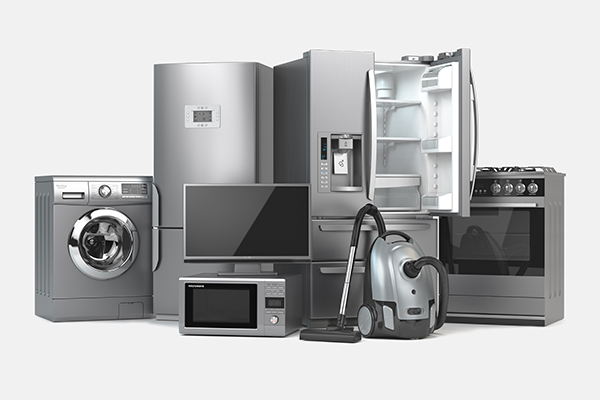From Raw to Refined: Unraveling the Intricacies of Raw and Manufactured Goods

Home appliances. Set of household kitchen technics isolated on white background. Fridge, gas cooker, microwave oven, washing machine and vacuum cleaner. 3d illustration
In the vast and complex world of economics, the terms 'raw goods' and 'manufactured goods' are frequently used. However, the distinction between these two types of goods is often misunderstood or overlooked. This article aims to delve into the intricacies of raw and manufactured goods, highlighting their differences, their roles in the global economy, and the impact of technological advancements on their production and consumption.
Raw goods, also known as primary goods or natural resources, are unprocessed materials extracted directly from the earth. These include minerals, agricultural products, water, and timber. They are the building blocks of all other goods, serving as the initial input in the production process. Raw goods are typically characterized by their limited supply, geographical concentration, and susceptibility to environmental and market fluctuations.
On the other hand, manufactured goods, also known as secondary goods, are products that have been processed or transformed from raw goods. These include electronics, automobiles, furniture, and processed food. Manufactured goods are the result of human labor and innovation, adding value to the raw materials through various stages of production.
The primary difference between raw and manufactured goods lies in their stage of production. Raw goods are at the initial stage, while manufactured goods are at the final stage. This difference is crucial as it impacts the goods' value, price, and role in trade. Raw goods are generally cheaper and less valuable than manufactured goods due to the labor, technology, and capital invested in the latter's production.
Another key difference is their impact on the economy. Economies heavily reliant on raw goods exports, often referred to as 'resource-dependent', face challenges such as price volatility and economic instability. In contrast, economies with a strong manufacturing sector tend to have higher income levels, job opportunities, and economic resilience.
The advent of technology has significantly influenced the production and consumption of both raw and manufactured goods. Technological advancements in extraction and farming methods have increased the efficiency and sustainability of raw goods production. Meanwhile, innovations in manufacturing technologies, such as automation and artificial intelligence, have revolutionized the production of manufactured goods, leading to higher quality products, lower production costs, and increased productivity.
However, the increasing use of technology also poses challenges. For raw goods, over-extraction and over-farming due to advanced technologies can lead to environmental degradation. For manufactured goods, automation and artificial intelligence may lead to job displacement and increased income inequality.
In conclusion, understanding the difference between raw and manufactured goods is essential for comprehending the dynamics of the global economy. As technology continues to evolve, it will undoubtedly reshape the production and consumption patterns of these goods, presenting both opportunities and challenges for economies worldwide.


